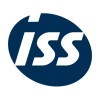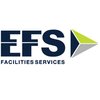Filter interviews by
Martinet Facility Management Services Fire Technician Interview Questions and Answers
7 Interview questions
There are several types of fire panels used in fire protection systems.
Conventional fire panels
Addressable fire panels
Analog fire panels
Intelligent fire panels
Wireless fire panels
Voice evacuation fire panels
There are five main types of fire extinguishers: water, foam, powder, CO2, and wet chemical.
Water extinguishers are suitable for Class A fires involving solid materials like wood or paper.
Foam extinguishers are effective for Class A and B fires, which involve flammable liquids like gasoline or oil.
Powder extinguishers can be used on Class A, B, and C fires, which involve flammable gases.
CO2 extinguishers are suita...
A fire extinguisher is a portable device used to control or extinguish small fires.
Fire extinguishers contain a pressurized substance that is expelled to suppress or extinguish fires.
They are typically classified based on the type of fire they are designed to extinguish, such as Class A, B, C, D, or K.
Common types of fire extinguishers include water, foam, carbon dioxide, dry chemical, and wet chemical extinguishe...
There are several types of detectors used in fire protection systems.
Smoke detectors
Heat detectors
Flame detectors
Gas detectors
Carbon monoxide detectors
Multi-sensor detectors
A fire alarm system is a network of devices that detect and alert people to the presence of fire or smoke.
Fire alarm systems are designed to quickly detect and notify occupants of a building about a potential fire.
They consist of various components such as smoke detectors, heat detectors, fire alarm control panels, and notification devices.
When a fire is detected, the system activates audible and visual alarms to ...
There are 6 classes of fire: Class A, Class B, Class C, Class D, Class K, and Class F.
Class A fires involve ordinary combustible materials like wood, paper, and cloth.
Class B fires involve flammable liquids like gasoline, oil, and alcohol.
Class C fires involve energized electrical equipment.
Class D fires involve combustible metals like magnesium and titanium.
Class K fires involve cooking oils and fats.
Class F fire...
There are two main types of fire pumps: centrifugal pumps and positive displacement pumps.
Centrifugal pumps use centrifugal force to move water and are commonly used in fire protection systems.
Positive displacement pumps use a piston or rotary mechanism to move water and are often used in high-rise buildings or industrial settings.
Examples of centrifugal pumps include end suction pumps and split case pumps.
Example...
Martinet Facility Management Services Fire Technician Interview Experiences
1 interview found
I applied via Recruitment Consultant and was interviewed before Nov 2020. There was 1 interview round.
Interview Questionnaire
7 Questions
- Q1. What is Fire Alam system?
- Ans.
A fire alarm system is a network of devices that detect and alert people to the presence of fire or smoke.
Fire alarm systems are designed to quickly detect and notify occupants of a building about a potential fire.
They consist of various components such as smoke detectors, heat detectors, fire alarm control panels, and notification devices.
When a fire is detected, the system activates audible and visual alarms to alert...
- Q2. How many types of fire panel?
- Ans.
There are several types of fire panels used in fire protection systems.
Conventional fire panels
Addressable fire panels
Analog fire panels
Intelligent fire panels
Wireless fire panels
Voice evacuation fire panels
- Q3. How many types of Detectors?
- Ans.
There are several types of detectors used in fire protection systems.
Smoke detectors
Heat detectors
Flame detectors
Gas detectors
Carbon monoxide detectors
Multi-sensor detectors
- Q4. Classes of fire?
- Ans.
There are 6 classes of fire: Class A, Class B, Class C, Class D, Class K, and Class F.
Class A fires involve ordinary combustible materials like wood, paper, and cloth.
Class B fires involve flammable liquids like gasoline, oil, and alcohol.
Class C fires involve energized electrical equipment.
Class D fires involve combustible metals like magnesium and titanium.
Class K fires involve cooking oils and fats.
Class F fires inv...
- Q5. What is Fire extinguisher?
- Ans.
A fire extinguisher is a portable device used to control or extinguish small fires.
Fire extinguishers contain a pressurized substance that is expelled to suppress or extinguish fires.
They are typically classified based on the type of fire they are designed to extinguish, such as Class A, B, C, D, or K.
Common types of fire extinguishers include water, foam, carbon dioxide, dry chemical, and wet chemical extinguishers.
Fi...
- Q6. How many types of fire extinguisher?
- Ans.
There are five main types of fire extinguishers: water, foam, powder, CO2, and wet chemical.
Water extinguishers are suitable for Class A fires involving solid materials like wood or paper.
Foam extinguishers are effective for Class A and B fires, which involve flammable liquids like gasoline or oil.
Powder extinguishers can be used on Class A, B, and C fires, which involve flammable gases.
CO2 extinguishers are suitable f...
- Q7. How many types of fire pump?
- Ans.
There are two main types of fire pumps: centrifugal pumps and positive displacement pumps.
Centrifugal pumps use centrifugal force to move water and are commonly used in fire protection systems.
Positive displacement pumps use a piston or rotary mechanism to move water and are often used in high-rise buildings or industrial settings.
Examples of centrifugal pumps include end suction pumps and split case pumps.
Examples of ...
Interview Preparation Tips
Top trending discussions






Interview questions from similar companies

I applied via Naukri.com and was interviewed in Oct 2019. There were 3 interview rounds.
Interview Questionnaire
1 Question
- Q1. 1) Regarding fire safety assets and thr checking inspection and maintenance activities 2) Maintaining all the concerned documents soft as well as hard copies.
Interview Preparation Tips

I applied via Referral and was interviewed before Oct 2020. There were 4 interview rounds.
Interview Questionnaire
2 Questions
- Q1. All related to E&M
- Q2. What is power factor.
- Ans.
Power factor is the ratio of real power to apparent power in an AC circuit.
It is a measure of how efficiently electrical power is being used.
It ranges from 0 to 1, with 1 being the most efficient.
A low power factor can result in higher energy costs and equipment damage.
Capacitors can be used to improve power factor.
Example: A motor with a power factor of 0.8 requires 1.25 times more current than a motor with a power fa...
Interview Preparation Tips

I applied via Approached by Company

(2 Questions)
- Q1. Tell me something about you
- Q2. Read the line written on resume
Interview Preparation Tips

Fire Supervisor Interview Questions & Answers
Efs Facilities Servicesposted on 2 Oct 2024
I applied via Recruitment Consulltant
(2 Questions)
- Q1. Fire alarm system test
- Q2. Fire alarm system supervisor

I applied via Naukri.com and was interviewed in Oct 2021. There was 1 interview round.
Interview Questionnaire
3 Questions
- Q1. Permanent Staff Or Temp Staff
- Q2. How To Conduct Interview
- Ans.
Conducting an interview involves preparation, effective questioning, and evaluation of candidates to find the best fit for the role.
Prepare a structured interview guide with key questions relevant to the role.
Create a comfortable environment to help candidates feel at ease.
Use behavioral questions, such as 'Tell me about a time you overcame a challenge.'
Evaluate candidates based on their skills, experience, and cultura...
- Q3. Company Development
Interview Preparation Tips

I applied via Approached by Company and was interviewed before Apr 2021. There were 2 interview rounds.
Group discussion
Coding test
Interview Preparation Tips
- Smart Worker

I applied via Naukri.com and was interviewed in Mar 2023. There were 5 interview rounds.

(4 Questions)
- Q1. Role and responsibilities to a safety professional
- Q2. What should I do when a engineer and employee not much more interested in work environment, How to convene safety is first priority
- Q3. What's important a loto and LOTOTO procedure.how to check and ensure loto is applicable in correct machinery or equipment
- Ans.
LOTO (Lockout/Tagout) and LOTOTO (Lockout/Tagout of Tagout) procedures are important safety measures to prevent accidental start-up of machinery or equipment during maintenance or servicing.
LOTO procedure involves locking and tagging out energy sources to prevent accidental start-up.
LOTOTO procedure adds an extra layer of safety by requiring a second person to verify that all energy sources are properly locked out.
To e...
- Q4. Incident investigation procedure
- Ans.
Incident investigation procedure involves identifying, analyzing, and documenting incidents to prevent future occurrences.
Gather information about the incident including date, time, location, and individuals involved.
Interview witnesses and those directly affected by the incident.
Review any relevant documentation or records related to the incident.
Analyze the root causes of the incident to determine contributing factor...
(1 Question)
- Q1. Safety related questions
(2 Questions)
- Q1. Experience certificate and basic degree
- Q2. Tell me about your safety journey
How to control your site,
How to convene safety is important
How to implement about safety culture
Interview Preparation Tips
- Basic information about ur self
- Able to explain out past experie
- Know about the projects
- Having knowledge about factory a
All of us who are in the safety profession, what most of the people do is go to YouTube and watch a one-two minute video. That is enough knowledge for them. But instead of doing this, we should know every topic in detail. We should reach its date. What is it that I work on a principle. What will be the benefit if we start it. What is the cost, what will be the quality and we have to look at all the clear properties like this personal history?


(1 Question)
- Q1. Basic safety questions
(1 Question)
- Q1. Salary details questions

I appeared for an interview before Jul 2024, where I was asked the following questions.
- Q1. Tell me about yourself, what are your strength and weakness why do you want to this job.
- Ans.
Dynamic executive with a proven track record in leadership, strategic planning, and team development, seeking to drive growth and innovation.
Strength: Strong leadership skills demonstrated by successfully leading a team of 50+ in a high-pressure environment, resulting in a 30% increase in productivity.
Weakness: Tendency to be overly detail-oriented, which I am addressing by setting strict time limits for project review...
- Q2. Where do you see Yourself in 5 years shows your career aspiration and ambition.
- Ans.
In five years, I envision myself in a leadership role, driving innovation and fostering a culture of excellence within my organization.
I aim to be in a senior management position, leading strategic initiatives that align with the company's vision.
I plan to enhance my skills through continuous learning, such as obtaining an executive MBA or relevant certifications.
I aspire to mentor emerging leaders, sharing my knowledg...
Interview Preparation Tips
Martinet Facility Management Services Interview FAQs
Tell us how to improve this page.
Interview Questions for Popular Designations
Interview Questions from Similar Companies

Martinet Facility Management Services Fire Technician Reviews and Ratings
based on 2 reviews
Rating in categories
|
Security Guard
6
salaries
| ₹1 L/yr - ₹1.8 L/yr |
|
Accountant
5
salaries
| ₹1.7 L/yr - ₹4.3 L/yr |
|
Administration Executive
5
salaries
| ₹1.2 L/yr - ₹1.5 L/yr |
|
Assistant Facility Manager
5
salaries
| ₹2.2 L/yr - ₹2.5 L/yr |
|
Operations Executive
4
salaries
| ₹1.8 L/yr - ₹2.2 L/yr |

Sodexo

Compass Group Support Services

ISS Facility Services

BVG India
- Home >
- Interviews >
- Martinet Facility Management Services Interview Questions







